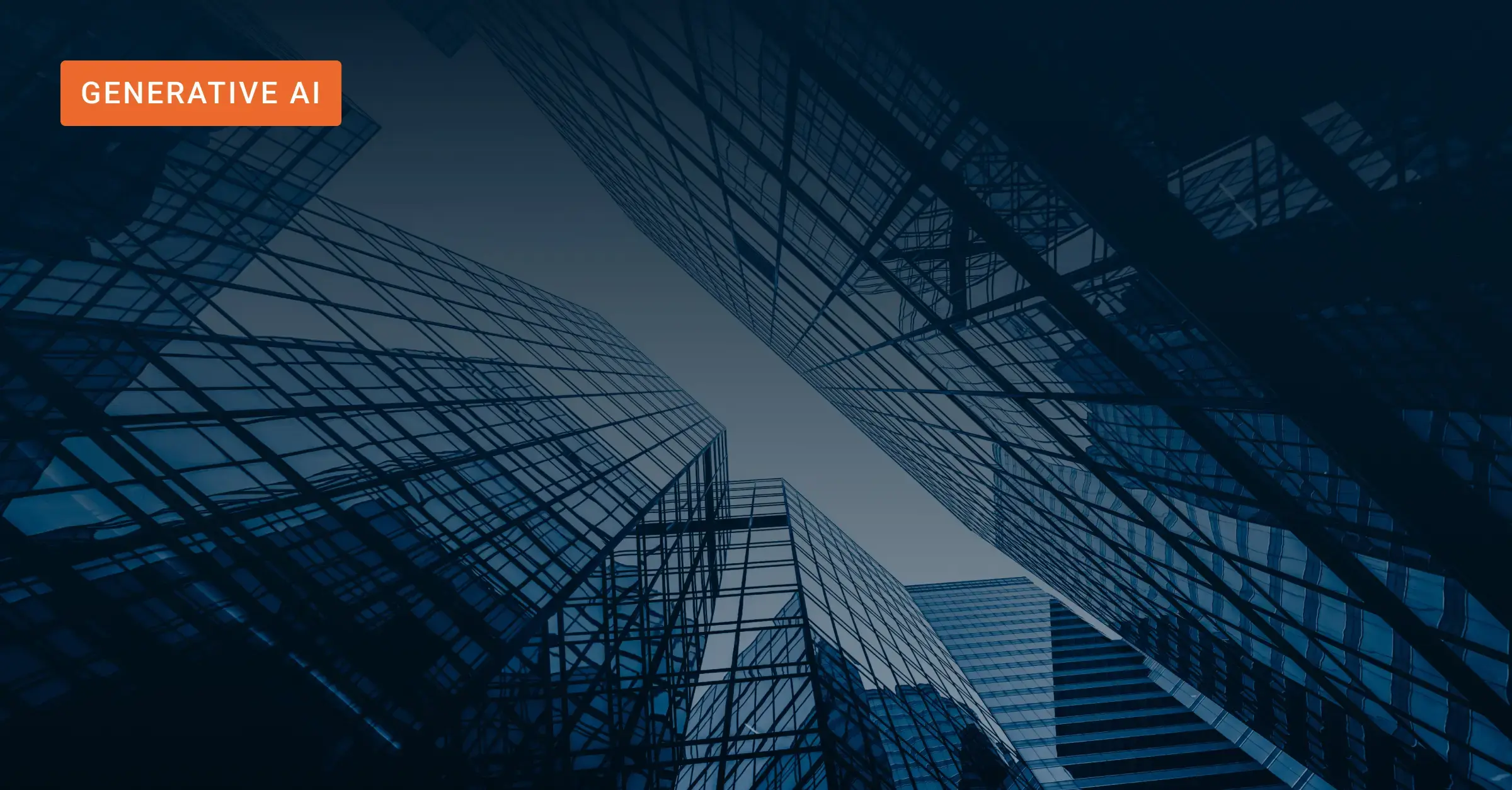Less than a year ago, we published a note on four practical applications of retrieval augmented generation (RAG), which showed how the technology enabled enterprises to harness enhanced GenAI applications in their operations. Since then, innovation has continued apace, dovetailing with rising end-user expectations to use AI to automate increasingly complex processes and workflows. To get an idea of just how much has changed in the meantime, this article explores four more advanced examples of GenAI applications in enterprise settings.
Underlying each of them is RAG, which continues to be the method of choice for enterprises to enhance the accuracy, reliability, and trustworthiness of their GenAI solutions.
At its core, the technology does one thing exceptionally well: RAG increases the accuracy of AI-generated responses and all but eliminates hallucinations by supplementing user queries with information retrieved from corporate and third party data repositories.
The ability to intuitively chat with data, documents, webpages, and search results has transformed how many organizations operate. But RAG was only the beginning. Adding a growing palette of enabling technologies has cast a wider net, broadening the scope of enterprise GenAI applications well beyond RAG's original focus.
The New Frontier in Enterprise Applications: Enhanced RAG
At Squirro, we have enhanced our RAG engine with five additional components that extend its scope to new, more demanding use cases, including knowledge management tools, as well as risk management and service management solutions.
%20(1).webp?width=1920&height=1080&name=EnterpriseGenAIPlatform%20(2)%20(1).webp)
Incorporating Knowledge Graphs that capture the semantic meaning of words, concepts, or process steps and the relationships between them supports the RAG’s search algorithms to improve the accuracy and completeness of the data retrieved, enhancing the quality of the generated output. Semantic knowledge graphs also facilitate the generation of new knowledge based on patterns and insights hidden in the data.
AI Guardrails enhance the quality of GenAI by ensuring that responses are accurate, reliable, and in accordance with corporate guidelines to build user trust. By incorporating essential instructions into large language model (LLM) prompts and verifying answers for compliance and safety, AI Guardrails mitigate the risks of errors, hallucinations, and biases, improving the quality of insights and fostering innovation.
The ability to seamlessly integrate real-time Operational Data extends the reach of the RAG search algorithms, allowing organizations to build a comprehensive knowledge base for LLMs combining structured and unstructured data. This may involve sourcing the latest key figures from an ERP or CRM system or checking the status of critical infrastructure to detect, validate, and address issues before they impact their operations.
The Agent Framework makes it easy to create and deploy custom tools for complex data processing pipelines using large language models. These tools extend the functionality of GenAI applications, for example, by improving content creation, analysis, enrichment, classification, fact-checking, and transformation, leaving open the option of human oversight. A Wikipedia retriever, for example, autonomously accesses Wikipedia when needed to improve output generated by the AI.
Finally, the Privacy Layer bolsters security, ensuring that no personally identifiable information (PII) is stored to safeguard sensitive data across all interactions. This further underscores our commitment to offering enterprise-grade security and compliance with internationally recognized standards for information security management (ISO 27001).
%20(1).webp?width=1200&height=675&name=Blue%20and%20White%20Modern%20Mind%20Map%20Brainstorm%20(2)%20(1).webp)
GenAI Applications: Enhanced RAG for Extended Applicability
Now that we’ve covered the latest technological enhancements behind our enterprise GenAI solution, let’s examine how to combine them to enable a variety of examples of GenAI applications that were previously beyond the scope of RAG-only GenAI.
Competitive Intelligence Powered by GenAI
Let’s start with competitive intelligence, which can be an invaluable resource for companies to position themselves and their offering, particularly in highly saturated markets. Traditionally, gathering and analyzing market intelligence about competitors and the business environment has been a laborious process carried out by business analysts. Sure, you can use RAG to query documents stored in corporate and external data repositories. But its out-of-the-box capabilities fall short of enabling competitive intelligence tools that automate the entire process.
The Squirro Enterprise GenAI Platform’s AI Agents enable the creation of competitive intelligence tools capable of autonomously scouring reports and website content from competitors and summarizing them into an easily digestible daily report that provides a holistic view of the competitive landscape. By providing the right insights at the right time and context, such business intelligence tools support users in making data-driven decisions based on the most current and relevant competitive intelligence and analysis.
GenAI-Driven Sales Enablement
First, what is sales enablement? Sales enablement is the process of providing sales teams with the tools, resources, and training they need to engage buyers and effectively close deals. Like competitive intelligence gathering, assembling sales enablement assets has long been a resource-intensive manual process. Again, RAG can help organizations create a solid foundation of assets to drive sales enablement strategies, particularly leveraging unstructured data stored in corporate and third-party data platforms and repositories.
However, enhanced RAG lets organizations go several steps further by enabling additional functionalities. AI Guardrails help sales enablement managers ensure that GenAI-created content is on brand and compliant with corporate policies. Access to operational data allows them to easily integrate the latest figures from spreadsheets and tabular data stored, for example, in customer relationship management systems. By comprehensively aggregating data into a 360-degree view of prospective buyers, sales teams have all relevant information at their fingertips to engage them effectively.
AI-Powered Financial Compliance Monitoring
Financial institutions are constantly required to ensure that their activities – both human and AI-enabled – adhere to regulatory requirements to reduce the risk of legal penalties and protect their reputation. Not only does compliance monitoring help detect and prevent fraudulent activities, money laundering, and other violations, it also promotes ethical business practices and strengthens the overall stability of the financial system. But while human workers can be trained to ensure that their actions comply with regulatory requirements, autonomous GenAI solutions need to be instructed to do so.
By integrating data from various sources, including internal documents, emails, transaction records, and external regulatory updates, GenAI can provide a comprehensive view of compliance-related activities and send compliance officers real-time alerts and risk insights when risks are detected. This ensures that any potential issues are identified and addressed promptly. AI Guardrails can then ensure that AI enterprise systems abide by relevant regulations by adding additional steps to the standard GenAI workflow, both upstream and downstream of the LLM call, diffusing compliance risks by ensuring that AI systems adhere to all relevant legal mandates.
GenAI for Supply Chain Optimization
In manufacturing and beyond, supply chain optimization aims to streamline operations, reduce costs, improve efficiency, and enhance customer satisfaction by ensuring that products and services are produced, shipped, and delivered on time. Well-optimized supply chains are quicker to adapt to market changes, minimizing disruptions and maximizing resource utilization, ultimately leading to better competitiveness and profitability.
GenAI-powered supply chain optimization software increases this resilience by automatically analyzing operational data, identifying inefficiencies, and offering actionable insights. Following the paradigm outlined for competitive intelligence monitoring, autonomously acting AI agents can support GenAI platforms in monitoring and reporting supply chain risks based on unstructured data sourced from reports to support corporate decision-making. In parallel, they can integrate real-time structured operational data from their own enterprise platforms to identify, diagnose, and mitigate bottlenecks.
Again, This is Only the Beginning
As we concluded in our last article, which highlighted four practical applications of RAG, these examples of GenAI applications are just the beginning. As this year comes to an end, more demanding and more sophisticated use cases will emerge, forever transforming how businesses operate and accelerating ROI. With the Squirro Enterprise GenAI Platform, the technology is already available, tried, tested, and relied on at scale by some of the most heavily regulated industries and markets.
And if you’d like to learn more about how the Squirro Enterprise GenAI Platform can enhance your business, book a free demo!







